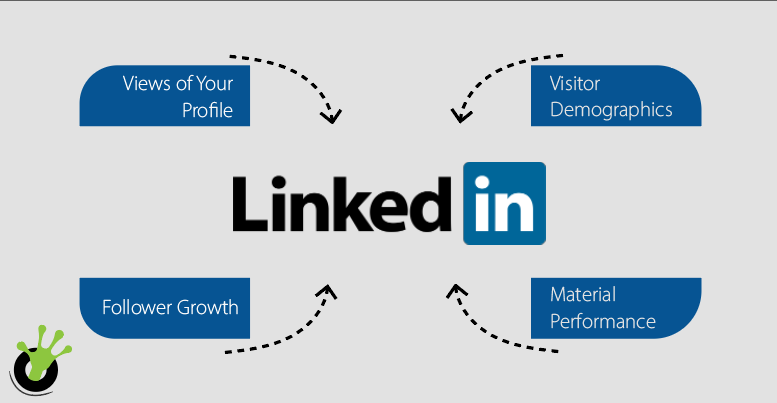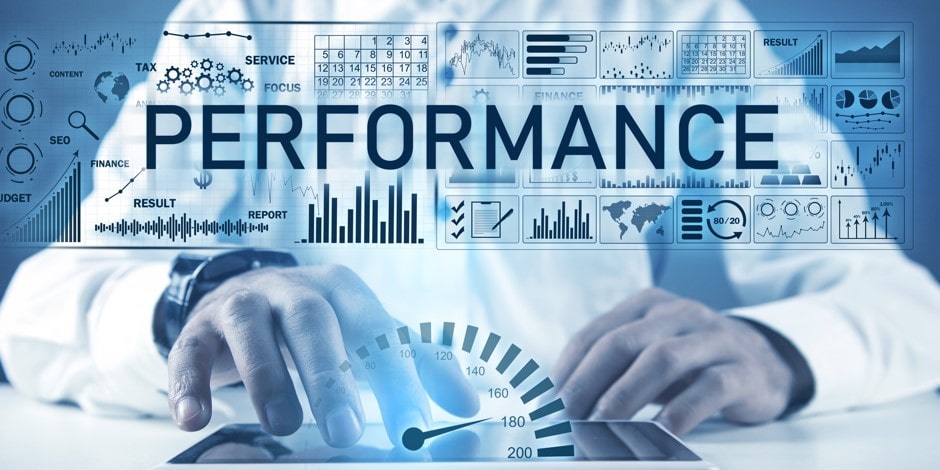Engaging your audience and developing your own brand can both be greatly benefited from using LinkedIn. It’s crucial to monitor your progress and make the appropriate adjustments if you want to maximize your presence on the platform. This article discusses the importance of LinkedIn content analytics and offers advice on how to use it to improve your site performance.
Understanding LinkedIn Analytics Concepts
The efficacy of your LinkedIn page or postings is evaluated using a set of specific criteria known as LinkedIn analytics. Similar to other social networking sites, LinkedIn offers a number of measures that may be used to gauge how well your plan is working. In order to monitor your success using LinkedIn analytics, it’s crucial to pay attention to a number of crucial metrics, such as:

-
Views of Your Profile:
This statistic shows how many times people have looked at your profile. You may determine the effectiveness of your material by looking at the amount of likes, comments, and shares it has received.
-
Follower Growth:
This indicator displays the number of new followers you’ve added during a given time period, providing you with information about the interests of your audience.
-
Visitor Demographics:
This metric gives you details about your audience’s job descriptions, industries, and geographic areas so you can adapt your content to their preferences.
-
Material Performance:
This measure provides information about how well your material is doing in terms of impressions, clicks, and engagement, which you may use to gauge its effectiveness.
To obtain LinkedIn stats for your posts:
- On the top of your LinkedIn homepage, click the “Me” icon.
- Go to the “Manage” area and click “Posts & Activity.”
- Select “Articles” or “Posts” and then use the appropriate filter to focus your search.
- Find the post you want to read, then click on it.
- To view the analytics for that post, choose “View analytics”.

Making Use of LinkedIn Analytics to Improve Performance
Take into account the following LinkedIn analytics techniques to improve your performance on LinkedIn:
Using LinkedIn Analytics, analyze your audience
To better understand your audience and tailor your content to their needs and interests, use LinkedIn Analytics’ visitor demographics measure.
Increase Content Variety with LinkedIn Analytics
The industry, target demographic, and current trends are just a few examples of the variables that may affect how effective a piece of content is on LinkedIn. Nevertheless, some of the most popular forms of content on the platform are as follows:
- Long-form articles, which are often articles with thought leadership.
- Such as pictures, videos, and infographics.
- News and updates unique to your industry.
Use LinkedIn’s industry-specific hashtags
Simply enter a topic of interest to see how many LinkedIn users are following it and find relevant hashtags to use or follow.
Improve LinkedIn Profile Optimization
To track the frequency of profile views, use LinkedIn Analytics’ profile views measure.
Optimize your LinkedIn profile by making it more appealing to draw in your target audience.
Start by creating an engaging headline that distinguishes you from the competition by emphasizing your expertise in a clear and concise way.
Encourage Interaction with Your LinkedIn Subscribers
Utilize LinkedIn Analytics’ content engagement metric to monitor how engaged your audience is with your content and engage with them by answering comments and messages.
Post a query or a statement to start a conversation. Emojis and other images can be added to posts to make them more appealing. You can also tag people and businesses and provide links to useful websites.

How to Increase Engagement on LinkedIn
By taking the following actions, you can maximize your LinkedIn engagements:
-
Set Specific Objectives for LinkedIn Engagement
- It’s essential to have a clear grasp of your goals in order to analyze your LinkedIn material successfully.
- Are you trying to increase brand exposure, lead generation, or engagement?
- By defining your objectives, you may focus your analysis on the metrics that are most important to accomplishing those objectives.
-
Choosing Useful Metrics for Monitoring
- To properly track your progress after setting your goals, it’s crucial to use the right metrics.
- On LinkedIn, the engagement rate, click-through rate, and follower growth are crucial metrics to monitor.
-
Examining the Content on LinkedIn
- Once your goals and metrics are established, evaluate the performance of your LinkedIn content.
- Find trends in your best-performing content, such as the content’s format (text, image, or video), subject, and time of day.
-
Optimizing the Content on LinkedIn
- Optimize your content on LinkedIn to increase engagement based on your analysis.
- Consider making more videos, for instance, if your video material performs better than text posts.
- To increase engagement, schedule additional posts for the morning if your morning posts do better.
-
Test and Improve Your LinkedIn Approach
- It’s essential to test and modify your content strategy based on your data in order to maximize your LinkedIn performance.
- Monitor your stats over time and make the required adjustments to improve platform engagement.
Analytics to Improve Your LinkedIn Content
- Utilizing LinkedIn content analytics can greatly increase platform engagement for content marketing.
- You may encourage engagement and develop lasting relationships with your target audience by monitoring the performance of your content, using data to improve it, connecting with your audience, experimenting with different content kinds, and measuring your progress over time.





 Content Writing
Content Writing Video Marketing
Video Marketing Graphic Design
Graphic Design Lead Magnet Creation
Lead Magnet Creation Content Marketing
Content Marketing